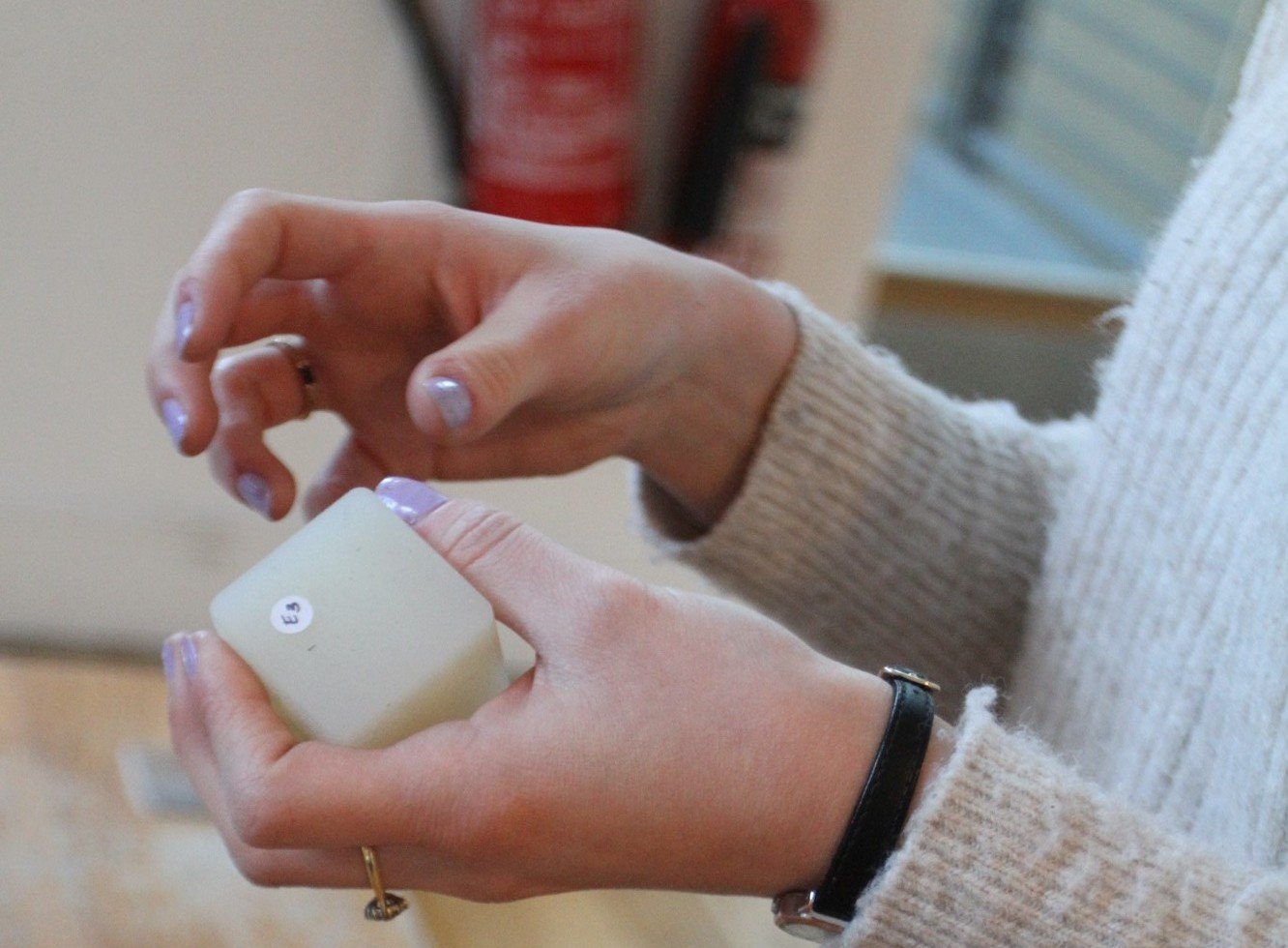
Thanks so much to everyone who has come along so far to one of our sessions in London or Glasgow to talk to us about your sensory preferences and how the materials used in prosthetics impact on your experience of your limbs.
We wanted to write a blog post to keep you up to date with the project as it progresses….so here goes!
This first post is about our motivations for this project, and how we have used the Materials Library to develop our method.
Our research team is made up of Caitlin McMullan, a Glasgow-based designer, researcher and below-knee amputee, and Sarah Wilkes, a Wellcome Trust research fellow at the Institute. We met during Hands of X, which was a design-led project focussing on the aesthetics of prosthetics and exploring whether we could offer people more material choice in upper limb prosthetics using digital manufacturing technologies.
After the Hands of X project ended we both had an interest in doing more work to understand the implications that the materials used in prosthetics can have for wearers, beyond function and comfort. Despite an increasing number of prosthetics companies offering wearers more materials choice and non-anthropomorphic prosthetics, questionnaires about aesthetics in prosthetics tend to focus on how ‘lifelike’ a prosthetic looks and not much research has been done to explore wearers’ materials, aesthetic and sensory preferences.
A large part of this project is therefore about understanding what wearers want prosthetic limbs to look and feel like and why. At the end of the project we will be putting together a palette of materials and surface finishes for prosthetic limbs that are chosen by wearers and feeding this back to prosthetists and prosthetics manufacturers, along with a method and set of tools for talking about material and sensory preferences.
This follow-on project was also inspired by Caitlin’s own experiences of phantom limb sensations, which are stimulated by specific kinds of materials and textures: we wanted to see whether other people experienced the same thing, and whether this could have implications for the design of prosthetic limbs or for desensitisation therapies.
Using the Institute of Making Materials Library for inspiration, we set about developing a method and set of tools to help us to talk to people about the materials and sensations they liked and disliked in their prosthetic limbs. For the pilot workshop in London we started with a selection of materials that stimulated Caitlin’s phantom limb sensations, with a focus on visual-tactile incongruence or ‘materials that surprise’. We also curated a wider collection of materials from a range of different families (metals, plastics, ceramics) that covered an array of different visual and tactile sensations like brightness, warmth, moistness, stiffness and softness, for example.
In a pilot focus group, we presented the selection of ‘phantom limb’ materials to people with some questions about which they liked and disliked, whether they were familiar materials and which they thought might be suitable for a prosthetic limb. We then had a broader conversation about materials in prosthetic limbs, using the wider array of materials, and asked for feedback on the palette of materials we’d selected and the structure of the session.


The feedback from the people who took part in this session was invaluable, and it helped us to restructure our questions and narrow down the materials palette we were using for the study.We then went back to the drawing board and made 6 specially made sets of objects with the same form (40mm cubes) that varied along one material property whilst keeping all the others the same.


Each of these sets now focuses in on one known or measurable material property that has the potential to affect the look and feel of a prosthetic (e.g. warmth, density, roughness). Based on research into materials used in contemporary and historic prosthetic limbs, we also added to the wider palette of materials that we are using to prompt the interview.

We recently took these specially made sets of objects and the curated collection of materials to the Centre for Contemporary Arts in Glasgow where we ran some materials handling sessions and interviews with amputees, with really interesting results – more on this soon!
